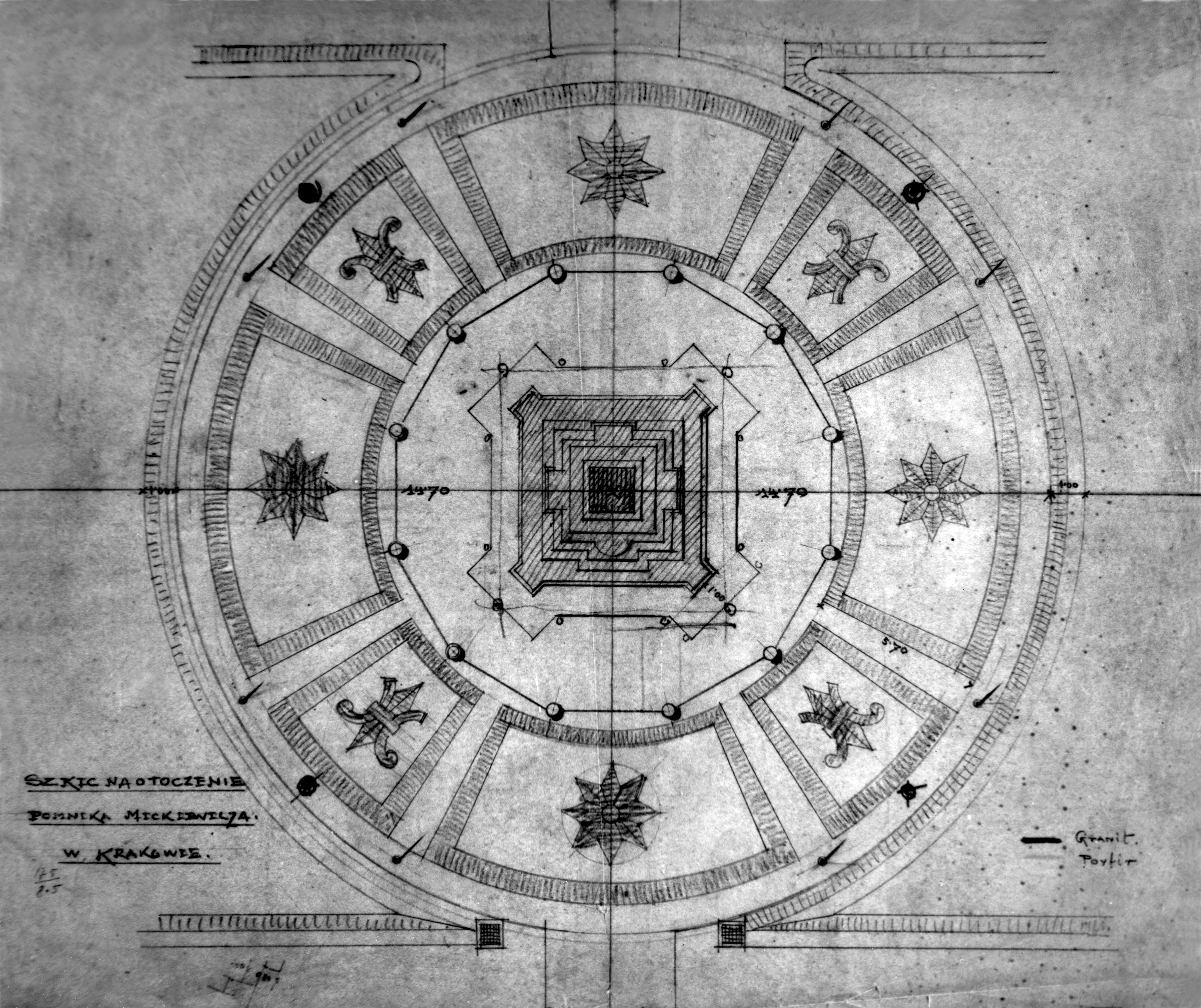Pomnik i jego otoczenie. Przyczynek do dziejów budowy pomnika Adama Mickiewicza w Krakowie
Abstrakt
Unveiled in 1898, the Adam Mickiewicz Monument in Cracow was the work of Teodor Rygier; meanwhile, it was Tadeusz Stryjeński who laid out its vicinity. The architect designed a whole made of three components, the main of them being a granite and porphyry ornamental belt that went in a circle round the base of the pedestal with symmetrically placed heraldic motifs of lilies and eight-pointed stars, these followed by twelve granite-hewn posts joined by chains forming a circle, and four decorative gas lampposts (candelabra) placed outside the belt. The monument and its surroundings survived intact until the outbreak of WW II. In 1940, the whole was destroyed by the Nazis. The Monument was reconstructed following the end of the war, in 1955, however without its genuine vicinity; the latter, slightly modified, was restored only in 2007, during the yet subsequent reconstruction of the Main Market Square surface.
Downloads
Bibliografia
Kaczmarzyk Dariusz, Sprawa pomników Adama Mickiewicza, „Ochrona Zabytków” 1956, nr 1–2, s. 88–100.
Król Anna, Ilustrowane dzieje pomnika Adama Mickiewicza w Krakowie, Kraków 1999.
Szubert Piotr, Pomnik Adama Mickiewicza w Krakowie – idea i realizacja [w:] Dzieła czy kicze, red. Elżbieta Grabska, Tadeusz S. Jaroszewski, Warszawa 1981, s. 159–242.


 Uniwersyteckie Czasopisma Naukowe
Uniwersyteckie Czasopisma Naukowe



